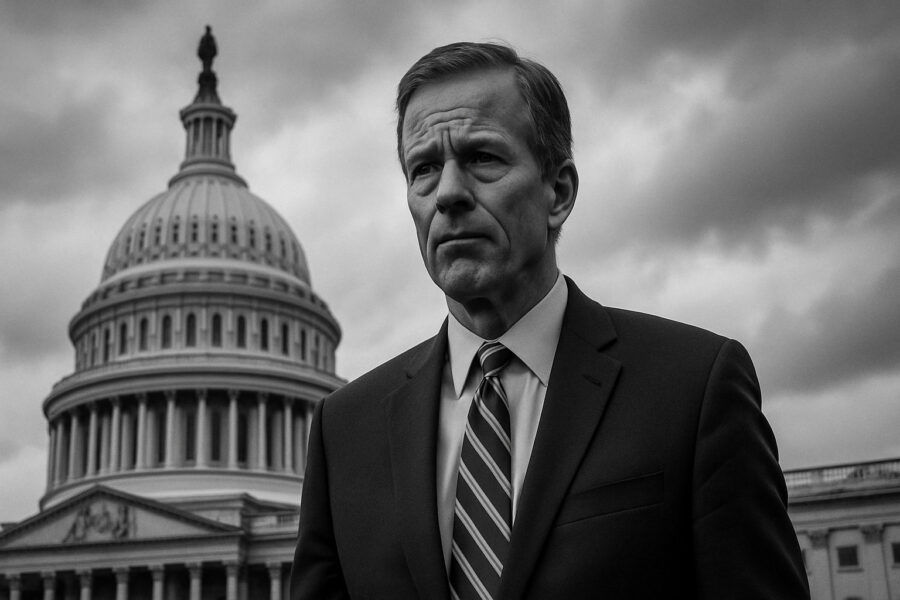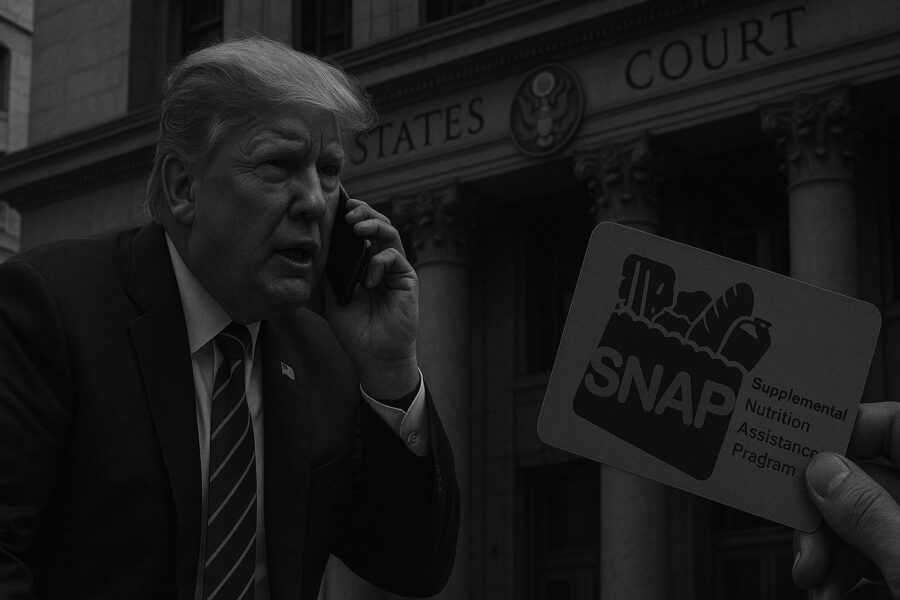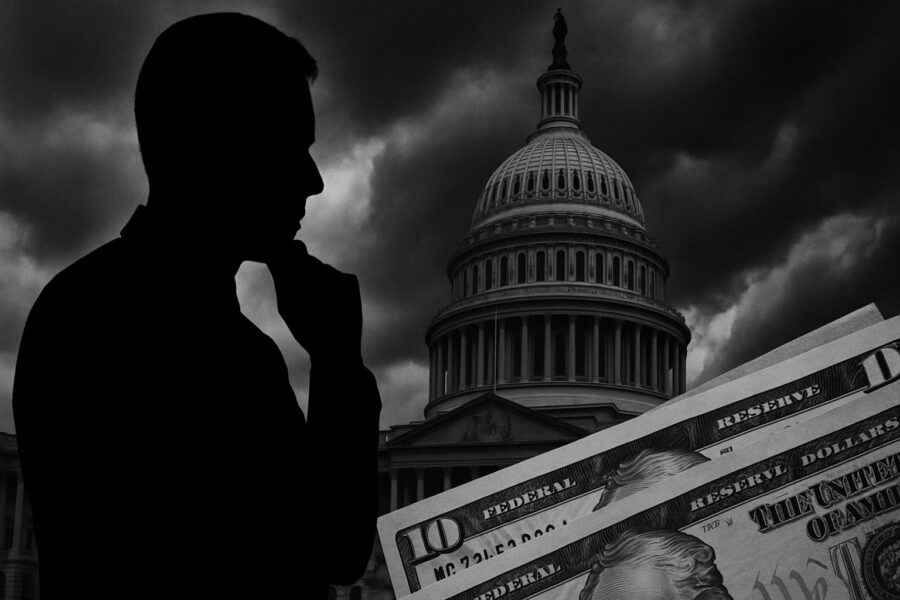Want Instant Updates? Follow us on Google News (here)
Want Instant Updates? Follow us on Google News (here)

What Comes Next for the 2025 U.S. Government Shutdown This November?
It’s been 32 days since the U.S. government officially shut down on October 1, 2025.
- Congress hasn’t passed the 2026 funding bill that would normally keep the lights on.
- More than 700,000 federal employees are still on furlough, and contractors are stuck in limbo.
- Key programs—SNAP, WIC, TSA, National Parks, and many federal services—are paused or operating at minimal capacity.
Americans from Anchorage to Atlanta are now asking the same question “What happens next?”
The short answer is–unless Congress breaks the deadlock soon, the effects will deepen through November — touching everything from food assistance to airport safety, healthcare funding, and economic growth.
The State of the Shutdown
The House passed a short-term funding measure that would have kept the government open through November 21, but the Senate rejected it due to partisan riders on immigration and energy spending.
President Donald Trump has refused to sign any “clean” bill that doesn’t include border-security funding, creating the deadlock now in its fifth week.
Current status (as of Nov 1, 2025):
| Day | Date | What happened (and source) |
|---|---|---|
| 0 | Oct 1, 2025 | FY 2026 funding deadline passes; partial furloughs begin for ~900,000 non‑essential employees[8] |
| 2 | Oct 3 | White House issues first “contingency” memo outlining essential‑only operations |
| 5 | Oct 6 | USDA announces a $5 billion SNAP emergency extension to cover November benefits |
| 9 | Oct 10 | Federal courts limit docket to “emergency” cases only |
| 12 | Oct 13 | National Parks close 97 % of facilities; only self‑guided trails stay open |
| 15 | Oct 16 | First major airline reports 20 % increase in flight delays due to reduced ATC staffing |
| 18 | Oct 19 | House passes a clean continuing resolution that the Senate refuses to bring to the floor |
| 21 | Oct 22 | SNAP lawsuit filed by a coalition of states & NGOs seeking a court order to release contingency funds |
| 24 | Oct 25 | Judge John McConnell issues a preliminary injunction blocking the Trump administration from using the SNAP rider[1] |
| 27 | Oct 28 | Medicaid enrollment freeze lifted for existing enrollees; new applications still on hold |
| 30 | Oct 31 | ACA premium‑subsidy deadline approaches; insurers warn of steep premium hikes |
| 31 | Nov 1 | One‑month mark – NBC reports the shutdown has now passed 30 days, with SNAP benefits still in limbo and federal workers still furloughed[1] |
| 33 | Nov 3 | Congressional vote scheduled – House will vote on a bipartisan “clean” appropriations bill that strips out the border‑security rider (see Political Developments) |
Federal agencies are now operating on “excepted” staff only — meaning most essential safety and defense functions continue, but everything else is frozen or severely reduced.
| Category | Situation | Source |
|---|---|---|
| Federal employees furloughed | ~720,000 workers | NCSL.org |
| Longest prior shutdown | 35 days (2018-2019) | Congressional Research Service |
| Current length | 32 days and counting | GovernmentShutdown.net / News |
| Expected next vote | Mid-November 2025 | Politico |
Human and Economic Costs
The effects go far beyond Washington.
| Impact Area | Current Conditions | Notes |
|---|---|---|
| Federal paychecks | More than 700k employees missed a full month’s pay; most will receive back pay when funding resumes | OPM.gov |
| Federal contractors | No guaranteed back pay; many small firms losing contracts | GAO Report |
| Local economies | Washington D.C., Norfolk, Huntsville, and Albuquerque report 15–25% business declines | Reuters |
| GDP impact | Estimated $1.8 B per week lost | CBO Estimate |
For a breakdown of affected federal departments, see the Agency Tracker.
Essential Programs Under Pressure
Programs serving low-income Americans are now at the breaking point.
| Program | November Status | Details |
|---|---|---|
| SNAP (Food Stamps) | At risk | USDA has not authorized November funding; some states may use emergency reserves. USDA memo via Reuters |
| WIC (Women, Infants & Children) | Partial operations only | Several states have stopped new enrollments; contingency funds nearly exhausted. FRAC.org analysis and GovernmentShutdown.net/WIC |
| Medicaid | Stable short term | States covering federal delay with reserves; long-term risk if shutdown continues. GovernmentShutdown.net/Medicaid |
| TSA & FAA | Operating with minimal staff | Growing air-traffic delays; JFK ground stop reported Oct 31. GovernmentShutdown.net/Travel |
| National Parks & Museums | Mostly closed | Limited operations with volunteer staff or local funds. NPS.gov |
Food banks report surging demand. Feeding America estimates 1.5 million new families may need emergency food assistance in November if benefits stall.
Court Orders and Emergency Funds
Two federal judges — in Massachusetts and Rhode Island — have ordered the administration to release emergency SNAP funding for November.
However, implementation is uncertain because most USDA staff managing disbursements remain furloughed.
Related coverage:
- Federal Judge Orders Trump Administration to Use Emergency Funds for November SNAP Benefits
- SNAP Ruling Leaves 42 Million Americans in Limbo
Governor Kathy Hochul of New York declared a state of emergency to protect food-aid recipients, calling on the White House to act. Read more here.
How States Are Responding
| State | Action Taken | Source |
|---|---|---|
| New York | Declared state of emergency; deploying state funds for SNAP/WIC | GovernmentShutdown.net/Hochul-Emergency |
| Minnesota | Lawmakers demanding USDA release funds; Sen. Klobuchar calls delay “unacceptable” | GovernmentShutdown.net/Klobuchar-Statement |
| North Carolina | Exploring temporary aid using block grants | Governor Press Release |
| California | Allocating state emergency food assistance funds for 2 weeks | CalOES.gov |
This uneven patchwork shows how deeply a federal funding gap ripples through the states.
The Next Big Deadline
The next potential turning point is November 21, 2025 — the end date of the proposed short-term bill that never passed.
If no agreement emerges by then, the 2025 shutdown will become the longest in U.S. history, surpassing the 35-day record of 2019.
Analysts from Bloomberg and Politico report that informal talks continue behind the scenes, but neither side has yet signaled compromise.
Public Sentiment and Political Pressure
Polls show the public increasingly blames Congress as a whole rather than either party individually.
According to Gallup’s October 31 survey, 64% of Americans fault both parties, 20% primarily Republicans, 10% Democrats, and 6% remain undecided.
| Response | Share of Americans |
|---|---|
| Blame Both Parties | 64 % |
| Blame Republicans More | 20 % |
| Blame Democrats More | 10 % |
| Unsure | 6 % |
As frustration builds, economists warn that prolonged gridlock could erode public confidence and delay consumer spending heading into the holiday season.
What Happens If It Continues
If the shutdown lasts into December:
- SNAP and WIC funding likely exhausts completely, forcing states to ration aid.
- Federal workers will have missed two full pay cycles, increasing defaults on rent and credit payments.
- Airports may face severe understaffing as unpaid workers call out.
- Scientific research and infrastructure projects will lose grant continuity, creating long-term backlogs.
- GDP losses could exceed $14 billion, according to CBO.
Read the full projections on our Economic Impact page.
Getting Help
If you’re affected by the shutdown — as a federal worker, contractor, or benefit recipient — verified resources are available:
- Emergency Food Aid: Feeding America Locator
- Unemployment Help: Check your state’s Department of Labor site for eligibility if you’re furloughed.
- Financial Relief: Several banks and credit unions have introduced temporary no-interest loan programs for federal employees.
- More Resources: Visit our Get Help page for continually updated assistance options.
Outlook for November
The coming weeks will determine whether the government reopens before the holidays or remains paralyzed.
Negotiators are hinting at possible compromises — perhaps a “clean CR” (continuing resolution) extending funding into early 2026 — but partisanship remains fierce.
Until Congress acts, federal operations will remain frozen, and millions of Americans will keep feeling the fallout.
Stay informed through the Government Shutdown News Network for verified updates, data tracking, and expert commentary.
The November Road‑Map
• Nov 3 – House Vote on a Clean Funding Bill
The House is set to take a floor vote on a bipartisan “clean” appropriations bill that removes the border‑security rider. If it passes, the Senate will need to bring it to the floor—requiring either a bipartisan compromise or a procedural vote that bypasses the filibuster.
- Why it matters: A successful vote would reopen the government and lift the furlough on federal workers.
• Nov 4–5 – Court‑Mediated SNAP Relief
Judge John McConnell’s injunction remains in effect, and the USDA is under a tight deadline to disburse contingency funds for SNAP. The administration has already been ordered to do so, but logistical hurdles mean that payments could still be delayed.
- Why it matters: 40 million people rely on SNAP to buy food; any delay could push millions into food insecurity.
• Nov 6 – ACA Premium‑Subsidy Deadline
The window for enhanced ACA subsidies closes on December 31. Congress is under intense pressure to pass an extension before the year ends, or premiums will rise dramatically for the ~24 million people currently receiving subsidies.
- Why it matters: A sudden spike in premiums could leave many without coverage, especially those in states that rely on the federal exchange.
• Nov 7 – Potential Senate Negotiations
If the House passes the clean bill, Senate leaders—particularly the majority caucus—will likely begin urgent negotiations. A “conference” could be held to iron out the border‑security rider, or a procedural vote could force a compromise.
- Why it matters: The Senate’s ability to approve the bill determines whether the shutdown ends in late November or drags into December.
• Nov 8–10 – State‑Level Emergency Funding
Governors in dozens of states have pledged emergency funds to cover SNAP payments while the federal government remains shut down. Some states have already opened temporary food banks and emergency assistance centers.
- Why it matters: State‑level relief can keep families fed while the federal mess is sorted out.
Bottom Line – What You Should Watch
| Event | When | Who’s Involved | Key Impact | External source |
|---|---|---|---|---|
| House vote on clean bill | Nov 3 | House members, Senate leaders | Potential end to furloughs | CNN, Nov 1[5] |
| Court‑ordered SNAP payments | Nov 4–5 | USDA, federal courts | Food security for 40 million | NBC News, Nov 1[7] |
| ACA subsidy deadline | Dec 31 | Congress, insurers | 30 % premium increase | CNN, Nov 1[5] |
| Senate filibuster resolution | Nov 7 | Senate Majority/Minority | Final approval of funding | Reuters, Oct 13 |
Stay tuned: We’ll keep updating this page with every new vote, court decision, and policy shift. If you’re a federal employee, a SNAP beneficiary, or simply want to understand how the shutdown affects everyday life, check back often for the latest verified updates.
Leave a reply




